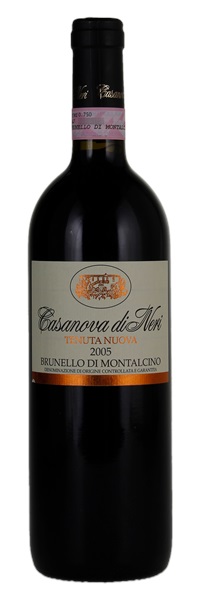Estimate

The nose presents ripe fruit, morello cherry, wild cherry and blackberry, with hints of spicy balsam and oak. Tannins on the round, intense palate are noticeable but not mouth-drying and the finale is intense.
.. boasts fabulous overall balance in a fairly restrained style for this bottling. Kirsch, roses and spices linger on the dark, enveloping finish. This is a terrific effort from Casanova di Neri...
Exhibits blueberry and vanilla cream, with zabaglione undertones. Full-bodied, with velvety, chewy tannins and a long aftertaste of sweet fruit. Solid and rich for the vintage.
Then sweet, suave and wonderfully fine-grained, with fleshy red cherry and red plum flavors given shape by harmonious acidity. Finishes with excellent length...